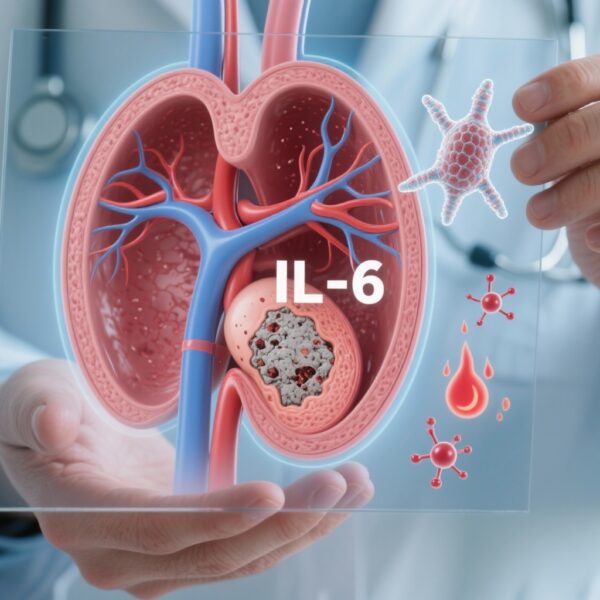Highlights
– The ROME randomized phase 2 trial (NCT04591431) demonstrated a higher overall response rate (17.5% vs 10%, P=0.0294) and improved median progression-free survival (3.5 vs 2.8 months; HR 0.66, P=0.0002) for genomically matched, MTB-guided therapy (TT) versus standard of care (SoC) in patients with advanced solid tumors after 1–2 prior lines of therapy.
– TT produced superior 12-month PFS (22.0% vs 8.3%) with similar grade 3–4 adverse event rates (40% TT vs 52% SoC). Median overall survival was similar, likely confounded by a 52% crossover rate.
– The trial provides randomized evidence supporting a tumor-agnostic precision oncology approach using comprehensive tissue and plasma genomic profiling and expert molecular tumor board recommendations.
Background and Unmet Need
Precision oncology has evolved from tumor-type–specific applications toward tumor-agnostic strategies that match targeted drugs to actionable genomic alterations across histologies. Regulatory milestones such as the tumor-agnostic approvals for mismatch repair deficiency–directed immunotherapy (e.g., pembrolizumab) and drugs targeting NTRK fusions illustrate the potential for biomarker-driven, histology-agnostic treatment paradigms. However, much of the existing evidence derives from single-arm basket trials and nonrandomized series. Randomized data comparing genomically guided therapy to standard-of-care regimens remain limited, and important questions persist about the magnitude of benefit, safety, and real-world applicability of broad genomic profiling and molecular tumor board (MTB)–directed therapy.
Study Design
The ROME trial was a multicenter, randomized, open-label phase 2 study that enrolled patients with advanced solid tumors who had progressed after one or two prior systemic treatment lines. Comprehensive genomic profiling was performed on tumor tissue and circulating tumor DNA (ctDNA) to identify actionable genomic alterations. An expert multidisciplinary molecular tumor board reviewed genomic results and recommended genomically matched targeted therapies where appropriate. Patients with an actionable, MTB-assigned therapy were randomized to receive tailored therapy (TT) based on MTB guidance or physician-choice standard of care (SoC).
The primary endpoint was overall response rate (ORR). Secondary endpoints included progression-free survival (PFS), overall survival (OS), time to treatment failure (TTF), time to next treatment (TTNT), and safety. Between November 2020 and August 2023, 1,794 patients were screened, 897 underwent MTB evaluation, and 400 patients were randomized.
Key Results
Primary outcome — Overall response rate. TT produced a significantly higher ORR than SoC: 17.5% versus 10.0% (P = 0.0294). This absolute ORR increase of 7.5 percentage points represents a relative improvement of ~75% in response probability in a heavily pretreated population with heterogeneous tumor types.
Progression-free survival. Median PFS was improved with TT compared with SoC (3.5 months vs 2.8 months; hazard ratio [HR] = 0.66, 95% CI 0.53–0.82; P = 0.0002). The trial also reported markedly different 12-month PFS rates: 22.0% for TT versus 8.3% for SoC, suggesting a subset of patients derived sustained benefit from matched therapy.
Overall survival. Median OS was similar between arms. Importantly, 52% of patients randomized to SoC later crossed over to receive genomically matched therapy, which likely attenuated any OS difference attributable to the initial randomized assignment. High crossover rates are a common challenge in trials that compare investigational strategies expected to be beneficial, and they complicate the interpretation of survival endpoints.
Safety. Rates of grade 3–4 adverse events were numerically similar or better with TT: 40% in the TT arm versus 52% in SoC. This finding suggests that MTB-guided targeted therapies were generally tolerable in this population and did not add an excess safety burden compared to standard regimens.
Population and feasibility. From the screening funnel, 897/1,794 (50%) patients reached MTB evaluation and 400 were randomized, indicating that a substantial proportion of screened patients either lacked actionable alterations, were ineligible, had clinical deterioration, or could not be randomized for other reasons. The trial therefore demonstrates both the feasibility and the attrition inherent in broad genomic screening programs in routine practice.
Interpretation and Clinical Implications
ROME represents an important randomized contribution to the evidence base for precision oncology. The trial’s positive effect on ORR and PFS indicates that MTB-guided, genomically matched therapy can provide clinically meaningful benefit across a heterogeneous population of advanced solid tumors. The magnitude of benefit was modest at the population level but clinically relevant for a subset of patients who achieved durable control (as reflected in the 12-month PFS difference).
Several pragmatic implications follow:
- Comprehensive genomic profiling with both tissue and plasma sequencing can identify actionable alterations that alter treatment selection and improve disease control compared with non-matched standard therapy.
- Use of an expert MTB to interpret complex genomic data and recommend treatment improves the likelihood that identified alterations are translated into effective therapy.
- Because the OS benefit was not demonstrated—likely confounded by high crossover—clinicians should focus on patient-centered outcomes such as response depth and PFS when discussing genomically matched options with patients in later lines of therapy.
Strengths and Limitations
Strengths
ROMEs strengths include its randomized design, relatively large sample size for a precision-oncology trial, multicenter conduct, use of integrated tissue and plasma genomic profiling, and MTB-directed treatment allocation. These features enhance the internal validity of the finding that genomically matched therapy improves ORR and PFS.
Limitations
Key limitations include the heterogeneity of tumor types and genomic alterations included, which means that the observed population-level effect may not predict benefit for any single biomarker–drug pair. The open-label design and physician-choice SoC comparator introduce potential bias in outcome assessment, although objective endpoints such as RECIST responses and PFS mitigate this concern. The 52% crossover from SoC to TT likely diluted any OS advantage and complicates survival interpretation. Additionally, generalizability may be limited by the requirement for access to targeted agents and an experienced MTB—resources that are variably available across healthcare systems.
Context with Prior Evidence
Nonrandomized basket and precision oncology studies have previously demonstrated dramatic, biomarker-specific responses in some patients and have supported tumor-agnostic approvals (for example, pembrolizumab for microsatellite instability-high tumors and TRK inhibitors for NTRK fusions). Randomized evidence has been sparse. The SHIVA randomized trial (Lancet Oncology, 2015) explored molecularly guided therapy versus physician-choice chemotherapy and did not show benefit, but that study used an earlier-generation matching approach and agents with limited activity for some alterations. ROME differs in design and era: it used contemporary comprehensive sequencing (tissue plus ctDNA), updated actionable lists, and MTB recommendations aligned with evolving evidence. The positive ROME results therefore strengthen the case that modern, multidisciplinary precision oncology can confer benefit when actionable alterations are appropriately matched to effective agents.
Practical Considerations for Clinicians
When considering genomic profiling and MTB-led matched therapy for patients who have progressed after first- or second-line therapy, clinicians should weigh:
- Likelihood of identifying actionable alterations based on tumor histology and prior treatments.
- Availability and evidence supporting targeted agents for the alteration in question (consider level-of-evidence frameworks when possible).
- Patient performance status, goals of care, and potential toxicities relative to expected benefit.
- Access to drugs (approved indications, compassionate use, or clinical trials) and logistics of sequencing turnaround time.
Future Directions
ROMEs positive randomized signal should motivate several next steps: larger confirmatory randomized trials or pragmatic trials to validate population-level benefits; biomarker-specific randomized studies where feasible (to establish causality for individual target–drug pairs); prospective incorporation of multiomic and functional assays to refine actionability; and health-economics evaluations assessing cost-effectiveness and system-level implementation strategies. Equitable access to CGP and MTB expertise remains an important policy challenge.
Conclusion
The ROME phase 2 randomized trial provides meaningful randomized evidence that genomically matched, MTB-guided therapy improves objective response rate and progression-free survival compared with physician-choice standard therapy in patients with diverse advanced solid tumors after one to two prior lines of treatment. The lack of demonstrated OS benefit is likely confounded by high crossover. Overall, the trial supports a tumor-agnostic precision oncology approach when comprehensive genomic testing and expert interpretation are available, while underscoring the need for further randomized and biomarker-specific research and attention to access and implementation barriers.
Funding and ClinicalTrials.gov
ClinicalTrials.gov identifier: NCT04591431. Funding and investigator disclosures are reported in the primary publication (Marchetti et al., Nat Med 2025).
Selected References
1. Marchetti P, Curigliano G, Biffoni M, et al.; ROME trial investigators consortia. Genomically matched therapy in advanced solid tumors: the randomized phase 2 ROME trial. Nat Med. 2025 Oct;31(10):3514-3523. doi:10.1038/s41591-025-03918-x.
2. Le Tourneau C, Delord J-P, Gonçalves A, et al. Molecularly targeted therapy based on tumour molecular profiling versus conventional therapy for advanced cancer (SHIVA): a multicentre, open-label, randomized, controlled phase 2 trial. Lancet Oncol. 2015;16(13):1324–1334. doi:10.1016/S1470-2045(15)00188-6.
3. Le DT, Durham JN, Smith KN, et al. Mismatch repair deficiency predicts response of solid tumors to PD-1 blockade. N Engl J Med. 2017;372(26):2509–2520. (Tumor-agnostic proof of concept for biomarker-driven therapy.)
4. Hyman DM, Puzanov I, Subbiah V, et al. Vemurafenib in multiple nonmelanoma cancers with BRAF V600 mutations. N Engl J Med. 2015;373(8):726–736. (Example of a tumor-agnostic, biomarker-driven efficacy signal from a basket trial.)
Image prompt for article thumbnail (AI-friendly)
Multidisciplinary molecular tumor board around a conference table reviewing genomic reports on a large screen; inset close-ups of DNA sequencing reads and a stylized Kaplan-Meier curve overlay. Diverse clinicians and scientists (oncologist, molecular pathologist, bioinformatician) in mid-discussion; cool, professional lighting; high-resolution, clinical research aesthetic.



